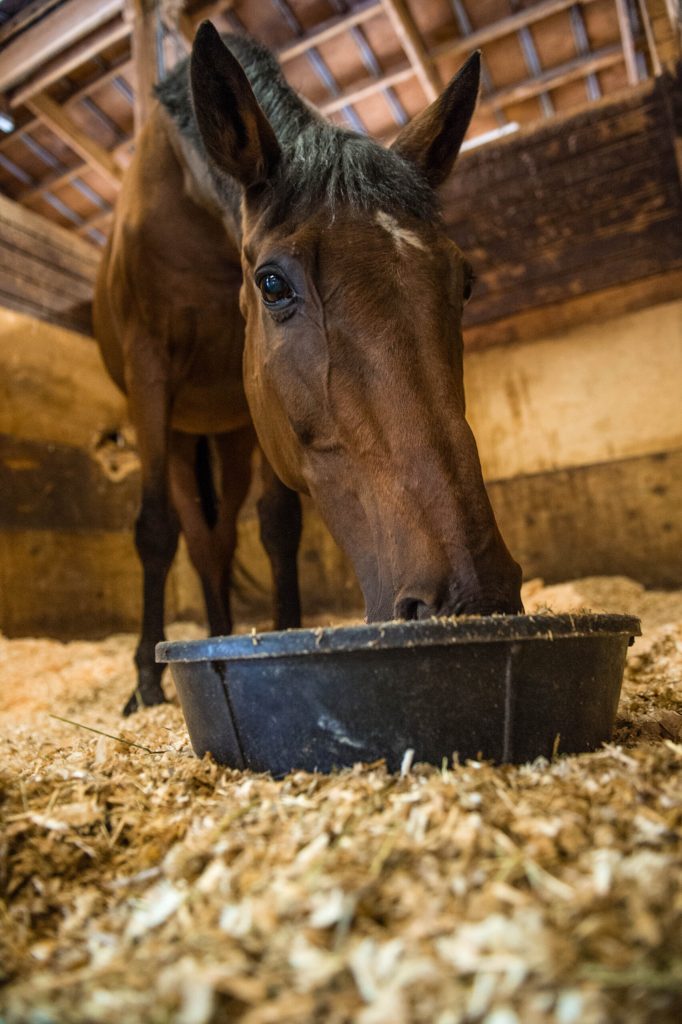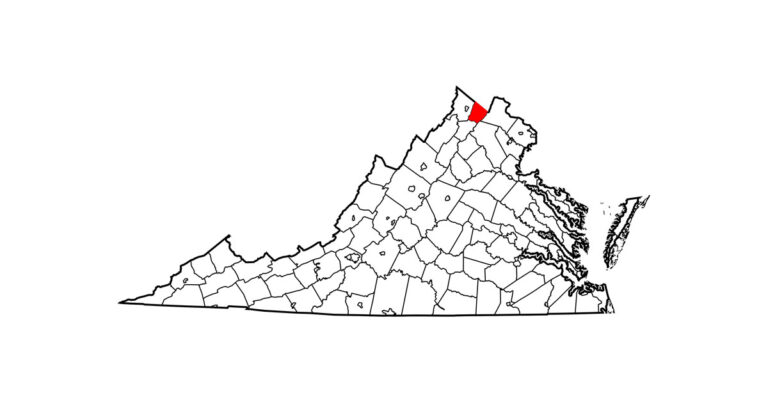
© Amy K. Dragoo
Perhaps your horse routinely bolts his ration. Or maybe he’s in the habit of greedily gulping treats. Then one day you notice him hanging his neck low while saliva spills from his mouth and a bright greenish discharge drains from his nose. Your horse is choking, and it’s time to call your veterinarian for help to resolve the problem.
One of the most common equine emergencies, choke in horses is quite different from choking in people. In horses, the problem occurs when a mass of chewed feed or a piece of something too large to swallow becomes lodged in the esophagus, the muscular tube that carries food from the mouth to the stomach. In contrast, it’s a choking person’s windpipe (trachea) that becomes obstructed—something swallowed “goes down the wrong pipe”—making it difficult or impossible to breathe.
The most obvious signs of choke in horses are excessive drooling and copious discharge containing food particles coming from the nostrils. A horse may also retch, cough, snort, look uncomfortable and act colicky, shifting his weight from side to side on legs spread wider than normal. He may have no interest in food or water. Choke can have serious consequences, so it requires a veterinarian’s prompt attention. In all but rare cases, the problem can be resolved on site. It’s also possible to take steps to prevent a horse from developing choke in the first place or having the problem recur. Here’s what you need to know.
Why Choke Happens
Normally, as a horse chews, glands in his mouth produce saliva to moisten and soften the food so it can easily be swallowed and sent through the esophagus and on to the stomach. But food that isn’t sufficiently softened can form a firm bolus that blocks the passageway, ultimately irritating the tissues and causing them to swell. This most often occurs when a horse gulps his feed. Many times, it involves a pelleted or extruded ration. But anything a horse consumes can cause choke, including fibrous hay, pieces of apple and carrot, tough plants ingested while grazing, and foreign objects, like rocks and sticks, that are accidentally swallowed. (In some cases, an obstruction that is large enough can be seen and felt on the left side of the horse’s neck near the jugular groove.) Dental issues that make it difficult or painful for a horse to properly chew may also contribute to the problem. So can an anatomical abnormality of the esophagus, though this isn’t common.
Treatment Measures
Once you’ve notified your veterinarian that your horse is choking, be mindful of a few important dos and don’ts while you wait for help to arrive:
- Do keep your horse as calm as possible and prevent him from eating and drinking by hand-walking him or muzzling him. Some veterinarians suggest applying a warm towel to the area of the obstruction and gently massaging to try to break it up. Give it a go if your horse is cooperative.
- Don’t administer oral medication if your horse is showing signs of discomfort. Chances are, it won’t make it around or penetrate the blockage to do any good. Even more important, don’t attempt to dissolve or dislodge the obstruction by using a garden hose to stream water into your horse’s mouth. It’s likely to increase the risk of serious complications, especially aspiration pneumonia, which can result when saliva and food particles errantly get into the lungs.
A physical exam will help your veterinarian determine the extent of the obstruction and settle on a course of treatment. Depending on the blockage’s size, it may be possible to take minimal measures to allow it to self-cure—in other words, break up on its own. In this case, the horse will be sedated and receive medication to relax the esophageal muscles. Fluids will be administered intravenously to ensure that he stays hydrated until the bolus softens and moves on.
A physical exam will help your vet determine the extent of the obstruction and settle on a course of treatment.
It’s more likely, however, that your veterinarian will sedate the horse and pass a nasogastric tube to clear the obstruction. In this most common method of treatment, small amounts of water are administered through the tube and allowed to drain over the course of as much as an hour until the blockage fully breaks up and is flushed free. Patience on the part of both practitioner and horse are key.
On rare occasions when nasogastric intubation fails, a horse will need to be sent to a referral center for further diagnostics. Typically, an endoscopic examination will reveal the cause of the obstruction—vital information when it’s a solid object that won’t be budged by flushing. Endoscopy can also help the veterinarian identify any anatomical abnormalities of the esophagus.
Aftercare and Precautions
To reduce the risk of aspiration pneumonia following choke, a horse may receive antibiotics and have his temperature monitored for several days. Additional medications may include sucralfate to treat ulceration of the esophagus or a nonsteroidal anti-inflammatory drug, such as flunixin meglumine (Banamine®), to relieve discomfort. Depending on the severity of the choke, it may be necessary to withhold dry feeds and hays for several days and replace them with a soupy mash of complete concentrate.
In the long run, management changes may help a horse avoid repeat episodes. For instance, placing several large, smooth rocks in the feed tub will make it harder for him to grab a mouthful and gulp. Regular dental care will take care of troublesome teeth that make it impossible for a horse to properly chew. If your horse is older and his teeth are worn down, consider adding water to his feed to soften it and break down more easily. And, last but not least, simply paying attention to a horse’s behavior at mealtime will help you to identify when something is amiss so you can summon veterinary assistance without delay.
Practical Horseman thanks Lillian Haywood, VMD, CVMA, for her technical assistance in the preparation of this article. Dr. Haywood grew up competing in the hunter and equitation rings in North Carolina. She attended Washington and Lee University, where she competed in IHSA, and then attended the University of Pennsylvania School of Veterinary Medicine as an equine major. Following veterinary school, Dr. Haywood joined Rood and Riddle Equine Hospital in Lexington, Kentucky, where she worked for eight years before deciding to move closer to home. She currently works in small animal practice in Chapel Hill, North Carolina.
This article originally appeared in the Fall 2022 issue of Practical Horseman.










